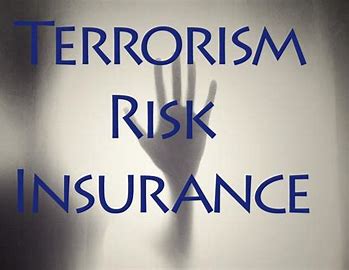Introduction:
In an increasingly interconnected and unpredictable world, the threat of terrorism has become a significant concern for governments, businesses, and individuals worldwide. Acts of terrorism can result in devastating human, economic, and social consequences, including loss of life, property damage, business interruption, and psychological trauma. To mitigate the financial risks associated with terrorism-related events, terrorism insurance has emerged as a critical risk management tool, providing coverage against acts of terrorism and related perils. This essay examines the landscape of terrorism insurance in the USA, exploring its significance, types, coverage options, pricing factors, regulatory framework, challenges, and future prospects.
Understanding Terrorism Risk:
Terrorism refers to the use of violence, intimidation, or coercion to achieve political, ideological, or religious objectives and instill fear among populations. Terrorist attacks can take various forms, including bombings, shootings, hijackings, cyberattacks, and chemical or biological incidents, targeting civilian populations, critical infrastructure, government facilities, commercial establishments, and public spaces. The motivations behind terrorism are diverse, ranging from political grievances and religious extremism to socioeconomic disparities and ideological conflicts. While the probability of terrorist attacks may vary over time and across regions, the potential impact of such events can be profound, affecting lives, livelihoods, and societal cohesion.

Significance of Terrorism Insurance:
Terrorism insurance plays a crucial role in helping individuals, businesses, and communities manage the financial risks associated with acts of terrorism and related perils. Several key reasons underscore the significance of terrorism insurance:
- Financial Protection: Terrorism insurance provides policyholders with financial protection against losses resulting from acts of terrorism, including property damage, business interruption, liability claims, and loss of life. By purchasing terrorism insurance, businesses can transfer the risk of terrorism-related losses to insurance companies, thereby safeguarding their assets, revenue streams, and continuity of operations. Terrorism insurance coverage enables policyholders to recover quickly from terrorist attacks, rebuild damaged property, and resume normal business activities without facing significant financial burdens.
- Risk Transfer and Resilience: Terrorism insurance facilitates risk transfer from policyholders to the insurance market, spreading the financial risk of terrorism-related events across a broader pool of insured parties and insurers. By pooling resources and sharing risks, terrorism insurance promotes resilience in the face of terrorist threats, ensuring that the costs of recovery and reconstruction are distributed more equitably. Insurance coverage encourages businesses to invest in security measures, risk mitigation strategies, and business continuity planning to reduce their vulnerability to terrorism-related risks and enhance their resilience to future attacks.
- Regulatory Compliance: In certain sectors and industries, terrorism insurance may be required by regulatory authorities or contractual obligations to protect against terrorism-related risks and liabilities. For example, lenders, landlords, and commercial property owners may require tenants or borrowers to obtain terrorism insurance coverage as a condition of leasing or financing agreements. Compliance with terrorism insurance requirements ensures that businesses maintain adequate insurance coverage to protect their assets, fulfill contractual obligations, and comply with regulatory mandates imposed by government agencies or industry regulators.
- Market Stability and Economic Resilience: Terrorism insurance contributes to market stability and economic resilience by providing financial resources to support recovery and reconstruction efforts following terrorist attacks. Insurance proceeds enable businesses, governments, and communities affected by terrorism to rebuild damaged infrastructure, restore essential services, and assist individuals and families impacted by acts of terrorism. By mitigating the economic impact of terrorist events, terrorism insurance helps preserve investor confidence, maintain consumer spending, and sustain economic activity in the aftermath of security threats and geopolitical instability.
Types of Terrorism Insurance Coverage:
Terrorism insurance coverage in the USA is available through various insurance providers, including commercial insurers, surplus lines insurers, and government-sponsored insurance programs. Common types of terrorism insurance coverage include:

- Property Terrorism Insurance: Property terrorism insurance provides coverage for physical damage or destruction to buildings, structures, and tangible property resulting from acts of terrorism, sabotage, political violence, or malicious attacks. Property terrorism insurance policies typically cover damage caused by explosions, bombings, arson, vandalism, and other terrorist-related perils, subject to specified coverage limits, deductibles, and exclusions. Coverage options may include building coverage, business interruption coverage, contents coverage, extra expense coverage, and debris removal coverage, tailored to the insured property’s value, occupancy type, and risk exposure.
- Business Interruption Terrorism Insurance: Business interruption terrorism insurance provides coverage for lost income, extra expenses, and operating losses resulting from the interruption or suspension of business operations due to acts of terrorism or related perils. Business interruption insurance policies compensate policyholders for the financial impact of terrorism-related events, including temporary closures, supply chain disruptions, evacuation orders, and civil authority orders, that prevent or impede business operations. Coverage options may include loss of revenue coverage, extra expense coverage, contingent business interruption coverage, and civil authority coverage, with specified waiting periods, indemnity periods, and coverage limits based on the insured business’s revenue, profitability, and risk exposure.
- Workers’ Compensation Terrorism Insurance: Workers’ compensation terrorism insurance provides coverage for occupational injuries, illnesses, and fatalities resulting from acts of terrorism or workplace violence. Workers’ compensation insurance policies cover medical expenses, disability benefits, rehabilitation costs, and death benefits for employees injured or killed in terrorist attacks while performing work-related duties. Employers are required to provide workers’ compensation coverage to employees under state laws, with terrorism coverage included as part of the standard policy or available as an optional endorsement. Workers’ compensation terrorism insurance ensures that injured workers and their families receive financial support and medical care in the event of terrorism-related incidents in the workplace.
- Liability Terrorism Insurance: Liability terrorism insurance provides coverage for legal liabilities, damages, and defense costs arising from third-party claims alleging bodily injury, property damage, or financial losses caused by acts of terrorism or related perils. Liability insurance policies protect businesses, property owners, public entities, and event organizers from lawsuits and liability claims resulting from terrorist attacks, security breaches, negligence, or inadequate security measures. Coverage options may include general liability coverage, premises liability coverage, products liability coverage, professional liability coverage, and directors and officers liability coverage, with specified coverage limits, deductibles, and exclusions tailored to the insured party’s risk exposure and liability exposures.
- Terrorism Political Risk Insurance: Terrorism political risk insurance provides coverage for political risks, economic risks, and sovereign risks associated with investments, assets, and operations in countries or regions prone to terrorism, civil unrest, war, or geopolitical instability. Terrorism political risk insurance policies protect multinational corporations, investors, financial institutions, and exporters from losses resulting from expropriation, currency inconvertibility, political violence, contract frustration, and government interference. Coverage options may include political risk insurance, credit risk insurance, investment insurance, and contract frustration insurance, with customizable coverage terms, risk assessments, and policy conditions based on the insured party’s risk profile and exposure.
Coverage Options and Considerations:
When selecting terrorism insurance coverage, businesses, property owners, and organizations should consider several factors to ensure adequate protection, affordability, and compliance with regulatory requirements:

- Risk Exposure and Vulnerability: Assess the organization’s exposure to terrorism-related risks and vulnerabilities, considering factors such as geographic location, industry sector, operational footprint, and security profile. Properties located in urban centers, transportation hubs, government facilities, financial districts, and symbolic landmarks may face higher terrorism risk due to their visibility, accessibility, and symbolic significance. Evaluate the potential impact of terrorism-related events on business operations, property values, supply chains, and stakeholder interests to determine the appropriate level of terrorism insurance coverage needed to mitigate financial risks and protect against liabilities.
- Coverage Limits and Deductibles: Evaluate coverage limits, deductible options, and premium rates offered by different terrorism insurance policies to select coverage that aligns with the organization’s risk appetite, budgetary constraints, and coverage needs. Terrorism insurance policies typically have separate coverage limits and deductible amounts for property coverage, liability coverage, and business interruption coverage. Choose coverage limits and deductible levels that provide adequate protection against terrorism-related losses while remaining cost-effective and financially sustainable for the insured party.
- Policy Terms and Conditions: Review the terms, conditions, and exclusions of terrorism insurance policies to understand the scope of coverage, policy limits, coverage triggers, and claim requirements. Pay attention to policy endorsements, extensions, and optional coverages that may enhance or modify the standard policy terms to meet specific risk management needs. Clarify policy provisions related to terrorism definitions, covered perils, territorial limits, sublimits, exclusions, waiting periods, and loss adjustment procedures to ensure clarity and transparency in policy coverage and claims handling.
- Risk Management and Mitigation: Implement risk management measures, security protocols, and emergency preparedness plans to mitigate terrorism-related risks and minimize potential losses. Invest in security enhancements, surveillance systems, access controls, and physical barriers to deter terrorist threats and protect critical assets. Conduct risk assessments, vulnerability assessments, and threat analyses to identify security vulnerabilities, assess potential threats, and develop risk mitigation strategies. Train employees, stakeholders, and security personnel in terrorism awareness, response procedures, and crisis management protocols to enhance organizational resilience and preparedness for terrorist incidents.
Regulatory Framework and Compliance:
Terrorism insurance in the USA is subject to regulatory oversight by state insurance departments, federal agencies, and industry regulators governing insurance practices, market conduct, and consumer protection. Insurers offering terrorism insurance coverage must comply with state insurance laws, regulations, and licensing requirements to operate legally and ethically in the marketplace. The Terrorism Risk Insurance Act (TRIA), enacted by Congress in 2002 and subsequently reauthorized, establishes a federal framework for terrorism insurance coverage, risk sharing, and public-private partnerships to address terrorism-related risks and promote market stability. TRIA provides a federal backstop for insurers against losses resulting from certified acts of terrorism, thereby encouraging the availability and affordability of terrorism insurance coverage in the private market.

Conclusion:
Terrorism insurance serves as a critical tool for managing the financial risks associated with acts of terrorism and promoting resilience in communities exposed to terrorism-related threats. By providing financial protection against property damage, business interruption, liability claims, and loss of life resulting from terrorist attacks, insurance coverage enables individuals, businesses, and governments to recover quickly and rebuild in the aftermath of security threats. As the threat landscape evolves and geopolitical tensions persist, terrorism insurance remains essential for mitigating risks, enhancing preparedness, and safeguarding against uncertainty in an unpredictable world. Through effective risk management practices, comprehensive insurance coverage, and regulatory compliance, terrorism insurance plays a vital role in protecting lives, property, and prosperity against the backdrop of terrorism-related risks and geopolitical instability.



